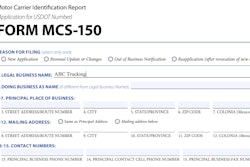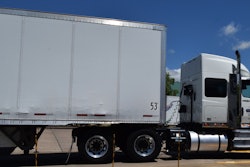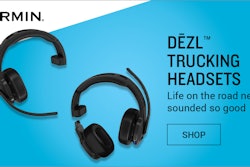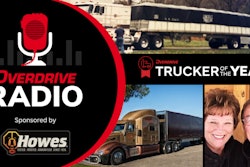Operating a small trucking company can be a never-ending battle for survival. Over the last couple years, trucking has lost a huge number of the companies previously registered with the FMCSA with authority. Rising operational costs, pretty well across the board, as an owner-operator knows, included increased insurance premiums for many and escalating fuel prices paired with increased equipment expense. ... Add to that stiff competition’s impact on freight rates and a freight economy clearly continuing to slow after post-pandemic highs, and it can quickly drive a shaky company under.
Some carriers will be tempted to cut corners, a risky proposition if trimming the fat means skipping needed preventive maintenance or looking for labor on the cheap. If you’re an owner-operator, that includes your own labor, too -- don’t sell yourself short by accepting substandard rates or an inadequate compensation package from a fleet you’re contracting with.
At the same time, difficult times might allow the cream of the crop among drivers and owners to shine. As my colleague Gary Buchs and others have noted, those willing and able to thrive through the bad times will be poised for big gains on the other side, when higher-demand driver-market realities (one way to think of the oft-invoked, so-called driver shortage) should work soundly in their favor.
[Related: Werner CEO shocked by small fleets' resilience amid trucking's 'bloodbath']
When that time comes, companies will be forced to put resources to retention of the best. Now is the time to showcase safety, to showcase compliance, time management and communication. They’ve always been critical, but they are attributes that, on the other side of the current reality, will be even more so. Excellent time management, courteous exchanges, good hygiene, and a professional appearance today will make its mark when the time for contract negotiation comes.
While sticking it out is no doubt difficult when miles and settlements take a dive, or home time is given up in favor of making up shorter miles as much as possible, there’s a lot an owner-operator can do to ease the journey on the long road ahead. I discovered that dropping my speed from 70 mph to 60 increased fuel efficiency dramatically, reducing costs in that department. While many use the rule of thumb that every single mph over 60 decreases fuel mileage a single tenth of a mile per gallon, in my experience it’s often been closer to two tenths. At that rate, 10 mph of additional cruising speed over 60 could cost you 2 miles per gallon, boosting your take-home by the same amount if you just slow down.
You can also increase fuel efficiency with the rest of the basics: proper tire inflation and overall maintenance, reduced idle time, and effective trip planning (always with a backup plan at the ready). If you have the money, add-ons that improve aerodynamics will pay for themselves in fairly short order with better fuel mileage in many cases.










